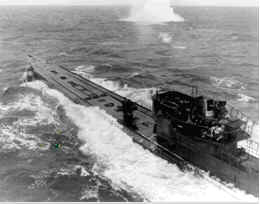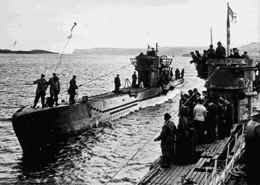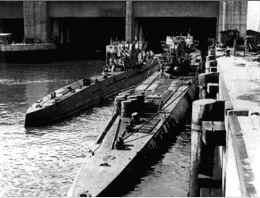Type IID U-boat
| Crew | 25 men |
| Length | 44 m |
| Displacement (surfaced) | 364 tons |
| Displacement (submerged) | 303 tons |
| Maximum speed (surfaced) | 12 knots |
| Maximum speed (submerged) | 7 knots |
| Range (surfaced) | 5650 nm (8 kts ) |
| Range (submerged) | 56 nm (4 kts ) |
| Depth | 100 m |
| Torpedo tubes | 3 (bow of the submarine) |
| Number of torpedoes | 5 |
| Guns | 20 mm AA gun |
History
U-Boats of the type II, nicknamed - " canoes " -, were the first submarines constructed in Germany, after the denial of the Versailles treaty by the Germans in 1935. The first models (Type IIA) had very limited range because of their low gasoline storage capacity. Models that followed were therefore enlarged to increase their range.
Submarines could only transport food supply for about 3 or 4 weeks atv sea. In fact, they often returned to home port after having exhausted their torpedos.
Type II submarines were quite small but crews appreciated them for their maneuverability, their fast diving speed, and their solidity.


